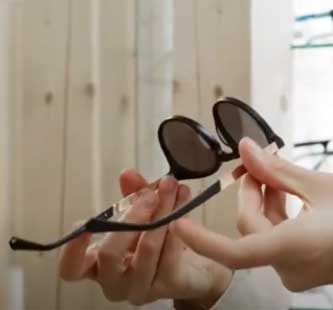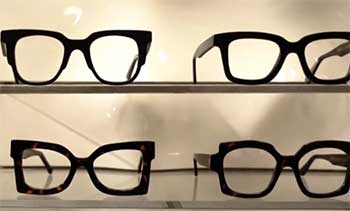I was excited to try out the PrimaFocus glasses because they promised a revolutionary adjustable focus mechanism designed to simplify my life. If you’re considering buying them, you might think they offer an all-in-one solution for your vision needs.
However, after using them and reading countless user experiences, I’ve learned that this product might not be the golden ticket it claims to be.
In this article, I’ll share my honest, first-person review—including pros, cons, maintenance tips, and comparisons with other brands—to help you decide if these glasses are really worth your money.
My Initial Impressions of PrimaFocus Glasses

When I first unboxed the PrimaFocus glasses, the sleek design caught my eye.
They promised precise focus adjustments with an easy-to-use dial, making them perfect for reading, working on a computer, or even hobbies that demand sharp vision.
As someone who appreciates convenience and style, I was ready to embrace the idea of one pair of glasses replacing multiple pairs.
The concept was appealing—especially for busy individuals like you who want a hassle-free, all-in-one vision solution.
However, excitement soon turned to skepticism as I started testing the product in my everyday routine. While the design looked modern and the adjustable mechanism seemed innovative, I quickly noticed some red flags that made me question the product’s overall value.
The Promise of PrimaFocus
The PrimaFocus glasses are marketed as versatile reading glasses that cater to both men and women. Their unique selling point is the adjustable focus mechanism, which is supposed to allow you to fine-tune your vision. According to the company’s description, these glasses offer:
- Precise Focus Adjustment for Clear Vision: An adjustable dial that lets you customize the lenses to your exact visual needs.
- Versatility for All Situations: One pair meant to replace multiple pairs of glasses, whether you’re reading, working, or enjoying hobbies that require precision.
- Stylish and Comfortable Wear: A modern, sleek design that fits comfortably on your face.
- Enhanced Daily Productivity: Clearer vision means you can work longer, read better, and even enjoy your hobbies without constantly switching glasses.
On paper, these features sound like a dream come true. But as you’ll see from my detailed review, the reality of using these glasses did not quite match the promise.
My Hands-On Experience With PrimaFocus Glasses
I decided to put the PrimaFocus glasses to the test in various settings—at home, in the office, and even when out with friends. Initially, I was optimistic. The adjustment dial was simple to use, and the idea of not having to carry multiple pairs of glasses was very attractive. But the optimism didn’t last long.
- Adjustability and Accuracy

One of the primary features of these glasses is the adjustable focus.
When I first turned the dial, the focus shifted, and for a brief moment, I felt that I had finally found a solution that could cater to my ever-changing vision needs.
However, this sense of wonder was short-lived.
I soon realized that adjusting the focus wasn’t as accurate as advertised.
The dial seemed to have a limited range, and finding the perfect setting was frustratingly inconsistent. At times, the adjustment felt like a guessing game rather than a precise calibration of my vision.
If you rely on your glasses to perform well in different lighting or distances, this lack of precision can be incredibly disappointing. The advertised “precise focus adjustment” quickly turns into an exercise in futility, leaving you to wonder if the innovation is truly worth it.
- Build Quality and Durability
Another major concern for me was the build quality of the PrimaFocus glasses. The frames and lenses are made of plastic, which might be acceptable for some, but I found the material to be less durable than expected.
With daily wear and tear, these glasses showed signs of wear much quicker than I had anticipated. Small scratches appeared on the lenses, and the plastic frame didn’t feel robust enough to withstand everyday use.
In a world where many of us invest in products that are built to last, the PrimaFocus glasses fell short. If you’re someone who values longevity and reliability in your eyewear, you might find that these glasses don’t hold up well over time.
The flimsy material could be a deal-breaker, especially considering the price point and the promises made by the company.
- Comfort and Fit
On a positive note, I must admit that the glasses are quite stylish. The modern design meant that I could wear them in various settings without feeling self-conscious. The comfort factor was initially good—the glasses sat lightly on my face, and the adjustable nose pads provided some relief during long periods of use.
However, as I continued to use them, I noticed that the comfort was compromised by the inadequate build quality. The lightweight plastic, combined with the imprecise focus mechanism, meant that any minor adjustments in fit could lead to discomfort or a suboptimal vision experience.
If you’re like me and wear your glasses for extended periods, you may find that the overall comfort diminishes as the product ages.
Pros of PrimaFocus Glasses
Even though my overall experience was less than ideal, there were a few aspects of the PrimaFocus glasses that I can acknowledge as positives:
- Innovative Concept: The idea of having adjustable focus glasses that eliminate the need for multiple pairs is innovative. It shows that the company aimed to address a common problem for people with varying vision requirements.
- Stylish Design: The sleek and modern look of the glasses makes them appealing from a fashion perspective. They can easily complement your everyday outfit and don’t scream “medical device.”
- User-Friendly Adjustment Mechanism: Initially, the adjustment dial is intuitive and easy to operate. It gives you the sensation of control over your vision, even if the actual performance doesn’t always meet expectations.
- Lightweight Construction: The glasses are lightweight, which can be a plus if you’re looking for something that won’t weigh you down during prolonged use.
Cons of PrimaFocus Glasses
Unfortunately, the negatives far outweighed the positives in my experience with these glasses. Here’s a detailed look at the major drawbacks:
- Inaccurate Focus Adjustment: The dial meant to offer precise control often resulted in a frustrating and inconsistent experience. You might find yourself constantly readjusting the glasses without ever achieving the clarity you need.
- Subpar Build Quality: Made predominantly of plastic, the glasses do not hold up well under regular use. The lenses are prone to scratches, and the overall durability leaves much to be desired.
- Lack of Reliability: Numerous reviews, including mine, point to issues with the product not functioning as advertised. If you’re relying on your glasses for critical tasks, this unpredictability can be a significant drawback.
- Refund and Customer Service Woes: I encountered issues when trying to get a refund for a returned pair. The company’s automated responses and refund process left me feeling ignored and frustrated.
- Price vs. Performance: Given the issues with adjustability and durability, the price of these glasses does not justify their performance. You may end up paying for a product that doesn’t deliver on its promises.
Maintenance Tips For PrimaFocus Glasses

Even if you decide to take a chance on the PrimaFocus glasses, there are a few maintenance tips you should follow to prolong their usability. Here’s what I’ve learned from my experience:
Cleaning the Lenses
- Use a Microfiber Cloth: Always clean your lenses with a microfiber cloth to avoid scratching the plastic surface. Avoid using paper towels or rough fabrics.
- Mild Cleaning Solution: If needed, use a mild soap solution mixed with water. Spray lightly on the lenses and gently wipe them clean. Avoid harsh chemicals that could degrade the plastic.
- Regular Cleaning: Make it a habit to clean your glasses regularly, especially after prolonged use. This helps maintain clarity and reduces the risk of scratches accumulating.
Adjusting the Focus Mechanism
- Gentle Handling: When adjusting the focus dial, do so gently. Over-turning or forcing the dial can lead to misalignment or damage.
- Periodic Checks: Regularly check the functionality of the adjustment mechanism. If it starts feeling less responsive, it might be a sign of wear that could worsen over time.
- Avoid Extreme Conditions: Try to avoid exposing the glasses to extreme temperatures or moisture, as these can affect both the dial and the overall material quality.
Storage and Handling
- Use a Protective Case: Always store your glasses in a protective case when not in use. This minimizes the risk of scratches and other physical damage.
- Safe Placement: Avoid leaving them in areas where they might get knocked off or exposed to dust. A designated glasses case on your bedside table or in your bag is ideal.
- Mind the Adjustment Dial: While handling the case, ensure that the dial is not inadvertently turned. This can help maintain the calibration you’ve set.
By following these simple maintenance tips, you may be able to extend the life of your PrimaFocus glasses, even though their inherent design and build quality might not be the best.
Who Should Consider These Glasses?
After my extensive testing, I’ve come to a few conclusions about who might be tempted by the PrimaFocus glasses—and who should steer clear.
- The Experimenters
If you’re someone who loves to experiment with the latest gadgets and aren’t overly reliant on flawless vision for critical tasks, you might be intrigued by the idea of adjustable glasses.
You may even enjoy the novelty of having a product that attempts to consolidate multiple pairs of glasses into one. However, be prepared for the possibility that the product may not work as intended, and that the trade-off in performance might not be worth the convenience.
- The Budget-Conscious
For those looking for an affordable solution to varying vision needs, the PrimaFocus glasses might seem like an attractive option at first glance. However, the compromise in quality and durability means that you might end up spending more in the long run.
Poor performance and potential issues with refunds and customer service could lead to additional costs or the need to purchase a replacement sooner than expected.
- The Critical Professionals
If you depend on consistently clear vision for your work—whether you’re a designer, a reader, or someone who spends a lot of time on detailed tasks—the inconsistency of the focus adjustment is a serious drawback.
In professions where every detail matters, relying on a product that fails to deliver consistent performance is simply not an option. For you, investing in more reliable, high-quality eyewear might be the better choice.
What Could Have Been Improved?
Looking back on my experience with the PrimaFocus glasses, there are several areas where I believe the product could have been significantly improved:
- Better Material Quality: Investing in higher-quality materials would not only improve the durability of the glasses but also enhance the overall user experience. Using stronger, more scratch-resistant plastics or even incorporating metal components in key areas could address the wear-and-tear issues I observed.
- Enhanced Adjustment Mechanism: The core feature of these glasses is the adjustable focus dial, and yet it remains the product’s biggest flaw. A redesign of the mechanism to ensure a smoother, more reliable adjustment would be critical. Imagine if the dial provided consistent results every time you turned it—a level of precision that truly lived up to its promise. That could have made all the difference.
- Improved Customer Service: No matter how great a product is, a poor customer service experience can tarnish its reputation. Addressing refund delays, streamlining communication, and ensuring that users feel heard would be vital improvements. For a product that relies heavily on its technological promise, the after-sales service needs to be just as innovative and efficient.
Alternative Products On The Market
Based on my research and comparisons, if you’re in the market for adjustable or multi-focus glasses, there are some alternatives that might better suit your needs. Here are a few options worth considering:
- Advanced Adjustable Glasses: Some brands offer glasses with a more sophisticated adjustable mechanism that uses advanced engineering to provide a truly seamless focus shift. While these options might come at a higher price, they tend to deliver on the promise of precision and durability. If you value reliability, these alternatives could be a better investment.
- Traditional Multi-Pair Solutions: Another option is to stick with traditional glasses—using separate pairs for reading, computer work, and other tasks. Although this might seem less convenient, many users find that the consistency and reliability of dedicated pairs far outweigh the convenience of a one-size-fits-all solution. Plus, traditional glasses often come with better warranties and higher quality materials.
- Auto-Focus Glasses: There’s also a growing market for auto-focus glasses that adjust automatically based on where you’re looking. These products are still emerging, but early reviews suggest that they may offer a more intuitive and hassle-free experience. If you’re technologically inclined and willing to invest in a newer solution, these auto-focus glasses might be worth exploring.
Comparing PrimaFocus With Other Brands

I’ve had the chance to use a few different types of adjustable and multi-focus glasses over the years, and comparing them with PrimaFocus gives some interesting insights. Here’s how they stack up against other brands in the market:
Adlens Adjustable Focus Glasses
I’ve used Adlens glasses before, and they’re often praised for their reliable focus adjustment. Here’s what I found when comparing them with PrimaFocus:
- Adjustment Mechanism: Adlens features a well-engineered dial that tends to offer a smoother and more predictable focus change. Unlike PrimaFocus, where the adjustment can feel haphazard and imprecise, Adlens provides a more controlled experience. If you’re seeking a product that adjusts more consistently for everyday tasks, Adlens tends to deliver that reliability.
- Build Quality: One of the most noticeable differences is in the build quality. Adlens glasses are constructed with sturdier materials and a design that’s clearly meant for longevity. The plastic used in Adlens models often feels more robust, and the frames tend to resist scratches and everyday wear much better than PrimaFocus. For anyone who prioritizes durability, this is a major point in favor of Adlens.
- Customer Service: From my experience and what I’ve gathered from other users, Adlens has a more responsive customer service record. They seem to handle refunds, replacements, and inquiries with greater transparency. In contrast, my experience with PrimaFocus involved automated responses and a refund process that was far from user-friendly.
- Overall Value: Although Adlens might be a bit more expensive than PrimaFocus, the performance you get in return—especially in terms of precision and longevity—justifies the extra cost. If you depend on your glasses for daily activities that require sharp, clear vision, investing in Adlens might save you from the hassles I experienced with PrimaFocus.
EyeJusters Adjustable Reading Glasses
Another brand I compared is EyeJusters, known for its innovative approach to adjustable reading glasses. Here’s a breakdown of how EyeJusters measures up:
- Adjustment Mechanism: EyeJusters takes a slightly different approach by incorporating a dial that’s designed for quick and seamless adjustments. In my experience, the focus mechanism on EyeJusters was more intuitive—requiring less fiddling than the PrimaFocus glasses. The adjustment on EyeJusters is engineered to provide a smoother transition between focal points, which is critical when you’re switching from reading to computer work.
- Build Quality: EyeJusters generally use higher-grade materials compared to PrimaFocus. The frames feel solid and well-constructed, and the lenses appear to be more scratch-resistant. This robustness in design means that EyeJusters can withstand daily use better than PrimaFocus, which often showed signs of wear with only moderate usage.
- Customer Service: EyeJusters also earns points for better customer service. Their support team is reportedly easier to reach and more proactive in resolving issues. In the world of adjustable glasses—where precision and durability are key—a supportive customer service experience can make a significant difference. My experience with PrimaFocus’s customer service, marked by delays and automated responses, pales in comparison.
- Overall Value: EyeJusters might sit at a slightly higher price point, but their focus on reliability and user experience makes them a strong contender. For users who require a dependable pair of adjustable glasses for varied tasks, EyeJusters presents an option that, while more costly, may prove to be a better long-term investment than PrimaFocus.
Traditional Reading Glasses Versus Adjustable Options
It’s also worth considering traditional reading glasses if you’re weighing your options. Traditional reading glasses are designed for a specific focal distance, which means they don’t require the adjustment mechanism found in products like PrimaFocus, Adlens, or EyeJusters. Here’s a quick comparison:
- Simplicity and Reliability: Traditional glasses are straightforward—no dial adjustments means there’s less room for error. Their simplicity often translates to higher reliability. Although you might need multiple pairs for different tasks, each pair is optimized for a specific purpose, ensuring clarity without the complications of an adjustable mechanism.
- Cost Considerations: While buying multiple pairs might seem less convenient, traditional reading glasses often come at a lower individual cost. Additionally, their durability tends to be higher, meaning you might not need to replace them as often as a product that has an unreliable adjustment system.
- User Satisfaction: Many users find that traditional reading glasses are more consistent in delivering clear vision. In contrast, the adjustable options—particularly PrimaFocus—can sometimes lead to frustration when the adjustment mechanism doesn’t perform as expected.
Frequently Asked Questions (FAQ)
From my experience and the feedback from numerous users, PrimaFocus glasses often do not work as advertised. While they offer an adjustable focus dial, the mechanism is inconsistent and frequently fails to provide the clear vision it promises.
Adjustable glasses can work if designed and engineered well. Unfortunately, the PrimaFocus model suffers from accuracy and durability issues. In general, the success of adjustable glasses depends on the quality of the design and materials used.
Auto-focus glasses, which automatically adjust based on your focal distance, are still a developing technology. Early models tend to be more reliable than manually adjustable ones like PrimaFocus, but it’s important to research and read reviews for the most current models on the market.
Multi-focus glasses that combine different focal ranges in one pair can work very well if designed properly. However, in my experience with PrimaFocus, the product fails to deliver the promised multi-focus capabilities reliably, often leaving users frustrated with its performance.
Summing Up My Experience
In conclusion, while PrimaFocus glasses present an innovative concept with their adjustable focus mechanism and stylish design, my personal experience—as well as numerous user reports—indicates significant drawbacks.
The inconsistent focus adjustment, low build quality, and subpar customer service make it hard for me to recommend this product wholeheartedly.
If you’re someone who needs reliable, high-performance eyewear for critical tasks, I suggest exploring alternative options that have a proven track record. The promise of adjustable glasses is exciting, but not at the cost of clarity and dependability.
